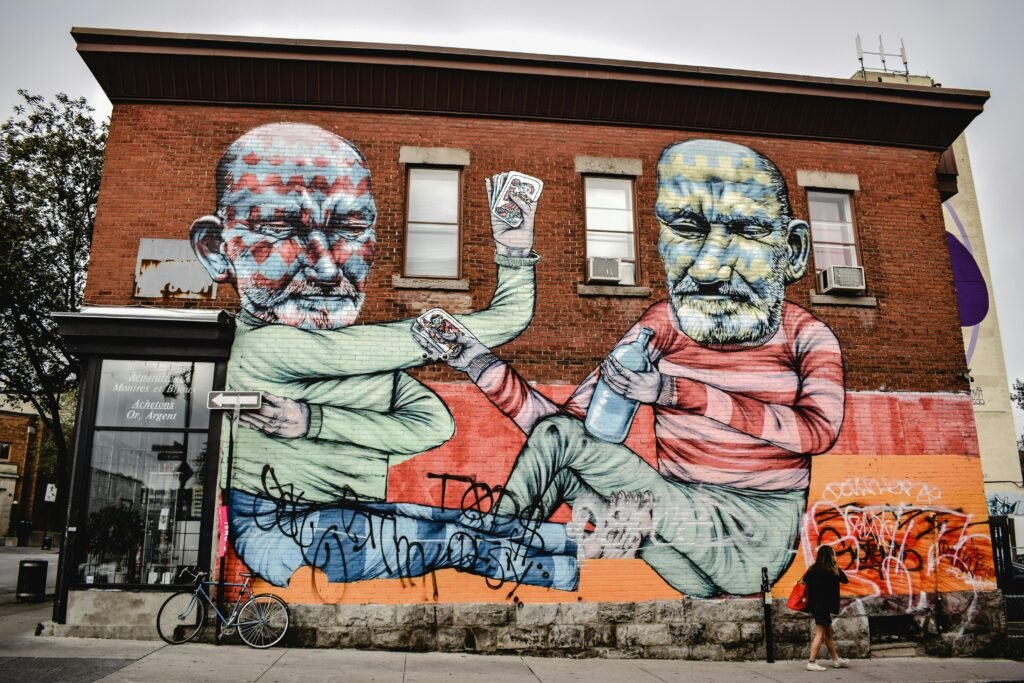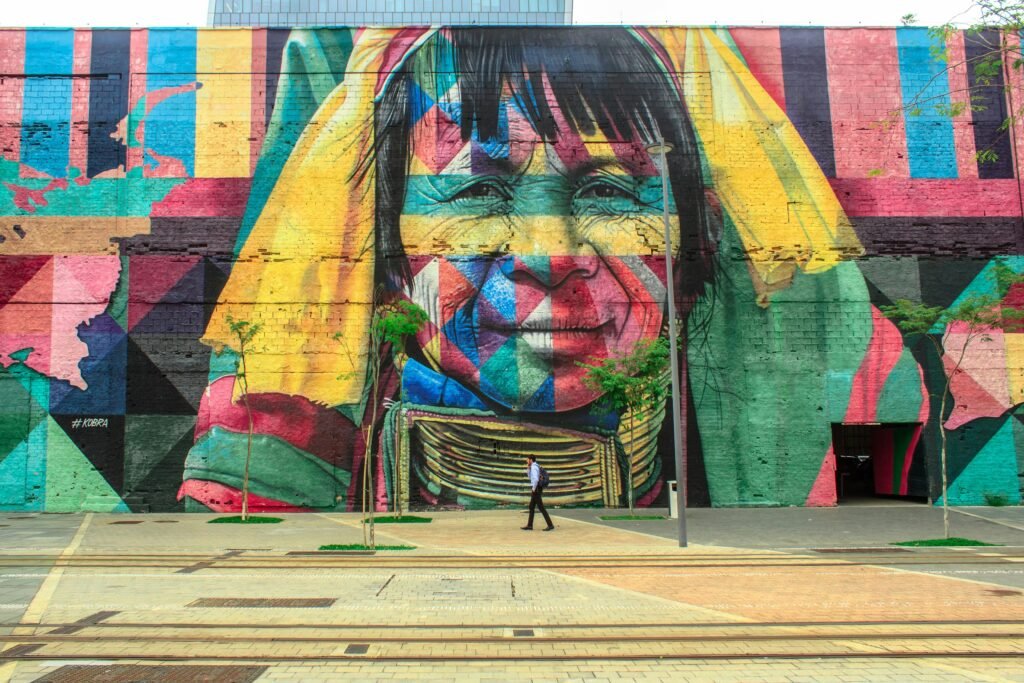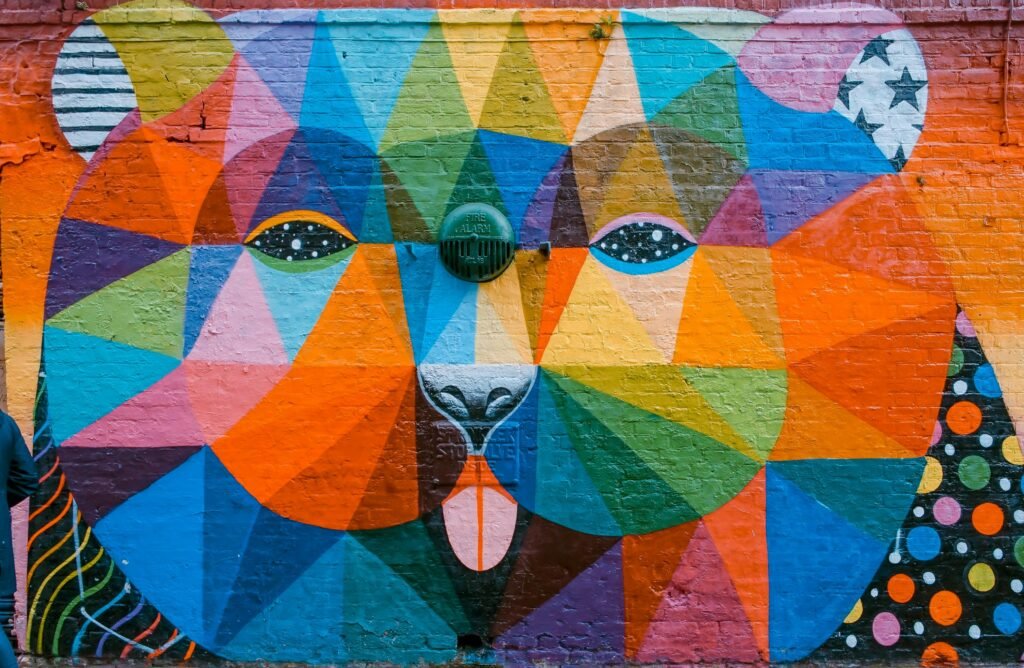Introduction to graffiti art
Graffiti art has long been a prominent element of urban culture. Adorning walls, bridges, and alleyways with its vibrant colors and bold statements. But what many people may not realize is that graffiti art is more than just a form of vandalism. It is a powerful mode of self-expression and a medium for social and political commentary.
In this article, we will delve into the fascinating world of graffiti art. Tracing its historical origins, examining its evolution, and exploring its impact on urban culture.
Historical origins of graffiti art
The roots of graffiti art can be traced back to ancient times. With examples found in ancient Egypt, Greece, and Rome. These early forms of graffiti served as a means of communication and expression, often depicting political messages or religious symbols.
However, it was in the late 1960s and early 1970s that graffiti art as we know it today began to take shape. In New York City, a young generation of artists started using spray paint to create large-scale murals and tags on subway trains, turning the city into a vibrant canvas of urban expression.
One of the unique aspects of stencil making is that it allows for the reproduction of the same design multiple times. In result in a consistent look throughout its application. This makes stencil graffiti the most efficient method of tagging. Both in terms of speed and cleanliness, enabling artists to quickly establish their reputation with the audience on the streets.
These characteristics and features of stencil graffiti have contributed to its immense popularity in the realm of illegal street art during the 1980s. However, it is important to note that contemporary adaptations of this technique have evolved and differ in certain respects. Throughout the years, there have been numerous talented artists who have embraced this underground medium.
Blek le Rat
Blek le Rat, a pioneer of stencil art, first began creating artworks in this style in 1981, strategically placing them throughout the streets of Paris. Often hailed as the originator of stencil graffiti, Blek honed his skills by studying fine art and architecture at the prestigious École Des Beaux Arts in Paris. His exposure to the vibrant street art scene in New York City during a student trip left a lasting impression on him, fueling his passion for this unique art form. However, Blek’s aspiration was to forge his own path and leave a distinctive mark among fellow urban artists, establishing himself as a prominent figure in the world of graffiti.
To achieve this, Blek turned to stencils as his medium of choice, opting to depict rats in his artwork and disseminate them across the City of Light. By using pre-cut stencils, Blek was able to execute his pieces with remarkable speed and efficiency, a crucial advantage considering the illegal nature of his activities at the time. It was through this audacious act that he earned his renowned moniker, deliberately selecting rats as his symbol of choice. In fact, RAT is an anagram for ART. A clever play on words that conveyed both his love for artistic expression and the notion of rats representing freedom and the proliferation of art.
Blek le Rat’s innovative approach and unique vision paved the way for countless street artists who followed in his footsteps. His dedication to pushing the boundaries of urban art and his unwavering commitment to self-expression have solidified his place in history as a true trailblazer. Today, artists around the world continue to draw inspiration from Blek’s legacy, carrying forward his bold and rebellious spirit in their own creative endeavors.

Blek le Rat – Untitled Autoportrait – Image via isupportstreetart.com
Graffiti art vs. vandalism: Understanding the difference
One of the most common misconceptions about graffiti art is that it is synonymous with vandalism. While it is true that some graffiti is done without permission and can be considered illegal, it is important to distinguish between graffiti art and simple acts of vandalism.
Graffiti art is a deliberate and thoughtful form of expression, often created with a specific message or artistic intent. Vandalism, on the other hand, is the act of defacing property without any creative or meaningful purpose. It is crucial to recognize and appreciate the distinction between the two. As graffiti art has the potential to inspire, provoke thought, and beautify urban spaces.

The evolution of graffiti art styles
Over the years, graffiti art has evolved into a diverse and dynamic art form. It includes various styles and techniques being developed. From the early days of simple tags and throw-ups to the elaborate and intricate pieces seen today, graffiti art has continuously pushed the boundaries of creativity.
Styles such as wildstyle, bubble letters, and photorealism have emerged, each showcasing the unique skills and artistic vision of the artist. The evolution of graffiti art styles reflects the constant innovation and experimentation within the urban art community.This keeps the art form fresh and exciting.
Iconic graffiti artists and their contributions
Throughout history, numerous graffiti artists have made significant contributions to the art form, leaving their mark on the urban landscape. Artists like Keith Haring, Jean-Michel Basquiat, and Banksy have gained international recognition for their groundbreaking work.
Keith Haring’s iconic figures and bold lines brought a sense of whimsy and social commentary to the streets of New York City. Jean-Michel Basquiat’s raw and expressive style captured the attention of the art world, blurring the line between graffiti and fine art.
Banksy, the elusive street artist, continues to challenge societal norms and provoke thought through his thought-provoking and politically charged stencils. These artists have not only shaped the evolution of graffiti art but have also inspired a new generation of artists to express themselves through urban expression.

The impact of graffiti art on urban culture
Graffiti art has had a profound impact on urban culture, shaping the way we perceive and interact with our cities. It has transformed once dull and lifeless spaces into vibrant and engaging environments, adding a sense of identity and character to neighborhoods.
Graffiti art has also become a tourist attraction. People from all over the world visiting cities like New York, Berlin, and London to witness the creativity and talent of graffiti artists firsthand.
Moreover, graffiti art has served as a platform for social and political activism. It gave a voice to marginalized communities and shedding light on important issues. It has the power to challenge the status quo, ignite conversations, and inspire change.
Legalization and acceptance of graffiti art
In recent years, there has been a growing recognition and acceptance of graffiti art as a legitimate art form.
Many cities have started embracing graffiti as a way to beautify public spaces and deter vandalism. Legal graffiti walls and designated areas have been established, providing artists with a safe and legal outlet for their creativity. Street art festivals and exhibitions have also become more common, showcasing the talent and diversity of graffiti artists.
This shift towards legalization and acceptance has not only allowed graffiti art to flourish but has also fostered a sense of community and collaboration within the urban art scene.
Graffiti art as a form of self-expression and activism
At its core, graffiti art is a powerful tool for self-expression. It allows individuals to communicate their thoughts, emotions, and experiences in a way that transcends language and societal barriers.
For many artists, graffiti is an outlet for creativity. A means of reclaiming public spaces, and a form of resistance against oppressive systems. It provides a platform for marginalized communities to have their voices heard and empowers individuals to challenge the status quo.
Graffiti art as a form of activism has the ability to inspire change. It can raise awareness, and spark conversations on important social issues.
Exploring the vibrant world of urban expression
The world of graffiti art is a vibrant and ever-evolving one, filled with talented artists, thought-provoking messages, and stunning visuals.
In the bustling streets of New York City and the hidden alleyways of Berlin, graffiti artists create art in every corner of the globe.
It is a celebration of diversity, creativity, and the human spirit.
Therefore, next time you come across a colorful mural or an intricate tag, be sure to take a moment to appreciate the artistry and the stories behind it. Furthermore, graffiti art is more than just paint on a wall. It is a reflection of our urban landscapes and the people who inhabit them.

Ultimately, the evolution of graffiti art has been a remarkable journey. Transitioning from its historical origins to its current status as a recognized art form.
Artists have transformed graffiti from being seen as vandalism to a celebrated form of expression and creativity.
Additionally, the shift in public perception towards graffiti art has played a significant role in its acceptance within the art world.
Graffiti art has transcended its initial association with vandalism. It has become a powerful medium for self-expression, activism, and social commentary. It has transformed our urban landscapes, inspired countless artists, and sparked important conversations. As we continue to explore the vibrant world of urban expression, let us embrace and appreciate the artistry, creativity, and cultural significance of graffiti art.



